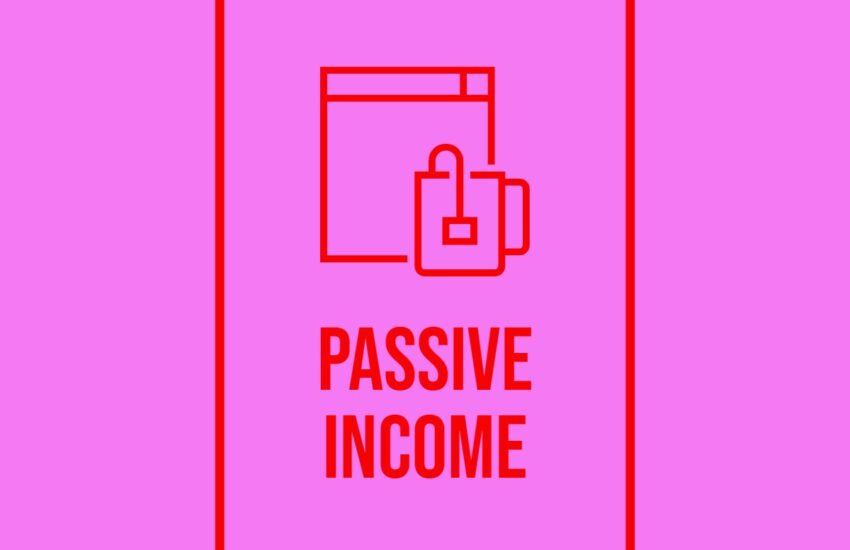How to Create an SEO-Friendly URL Structure for Your Blog Posts
Having an SEO-friendly URL structure is crucial for improving the visibility and ranking of your blog posts in search engine results.
A well-optimized URL not only helps search engines understand what your page is about but also makes it easier for users to navigate and share your content.
In this article, we will discuss how you can create an SEO-friendly URL structure for your blog posts.
- 1. Keep it Simple and Descriptive
- 2. Use Hyphens to Separate Words
- 3. Include Target Keywords
- 4. Avoid Stop Words
- 5. Use Canonical Tags
- Conclusion
- Frequently Asked Questions
- 1. What is an SEO-friendly URL, and why is it important for blog posts?
- 2. What are the key elements of an SEO-friendly URL structure?
- 3. How can you optimize URLs for readability and user experience?
- 4. How can you incorporate target keywords into URLs without keyword stuffing?
- 5. What are some common pitfalls to avoid when creating URL structures for blog posts?
- 6. How can you create a hierarchical URL structure for blog posts?
- 7. How can you optimize URL slugs for blog posts?
- 8. How can you ensure consistency and uniformity in URL structures across your blog?
- 9. How can you monitor and analyze the performance of blog post URLs for SEO?
- 10. How can you optimize URL structures for mobile devices and voice search?
- 11. Should you include dates in blog post URLs?
- 12. How can you handle URL changes or redirects without negatively impacting SEO?
- 13. What role do URL parameters play in SEO, and how can you manage them effectively?
- 14. How can you optimize URLs for featured snippets and rich snippets in search results?
- 15. What are some common mistakes to avoid when creating URL structures for blog posts?
1. Keep it Simple and Descriptive
When creating URLs for your blog posts, it’s important to keep them simple and descriptive. Avoid using long strings of numbers or random characters that don’t provide any meaningful information about the content of the page. Instead, use relevant keywords and phrases that accurately describe the topic of your blog post.
For example, if you’re writing a blog post about “10 Tips for Effective Content Marketing”, a good URL structure would be something like:
example.com/10-tips-effective-content-marketing
This URL clearly indicates what the blog post is about and is more likely to attract both search engines and users.
2. Use Hyphens to Separate Words
When creating URLs, it’s best to use hyphens (-) to separate words. Hyphens are preferred by search engines and are considered more user-friendly compared to underscores (_) or spaces. Using hyphens helps search engines distinguish between individual words in the URL, making it easier for them to understand the context of your content.
For example, if you’re writing a blog post about “The Benefits of Organic Gardening”, a good URL structure would be:
example.com/benefits-of-organic-gardening
Using hyphens in the URL improves readability and helps search engines recognize the separate keywords in your blog post title.
3. Include Target Keywords
While it’s important to keep your URLs simple and descriptive, it’s also beneficial to include your target keywords in the URL. Including relevant keywords in the URL can help search engines understand the topic of your blog post and improve its visibility in search results.
However, it’s important to strike a balance and avoid keyword stuffing. Use only one or two target keywords in the URL and make sure they appear naturally within the context of the blog post title.
4. Avoid Stop Words
Stop words are common words like “a”, “an”, “the”, “and”, “in”, etc. that are often ignored by search engines when indexing web pages. Including stop words in your URLs can make them longer and less readable without providing any additional value for SEO.
For example, instead of using:
example.com/the-benefits-of-organic-gardening
Use:
example.com/benefits-organic-gardening
By excluding stop words, you can create shorter and more concise URLs that are easier for both search engines and users to understand.
5. Use Canonical Tags
If you have multiple URLs that point to the same content, it’s important to use canonical tags to inform search engines about the preferred version of the page. Canonical tags help prevent duplicate content issues and consolidate the ranking signals for a particular page.
For example, if you have both a secure (HTTPS) and non-secure (HTTP) version of your blog post URL, you can add a canonical tag to the non-secure version to indicate that the secure version is the preferred URL.
<link rel="canonical" href="https://example.com/benefits-of-organic-gardening" />
By using canonical tags, you can ensure that search engines understand which version of your blog post URL to index and display in search results.
Conclusion
Creating an SEO-friendly URL structure for your blog posts is essential for improving their visibility and ranking in search engine results.
By keeping your URLs simple, descriptive, and optimized with target keywords, you can make it easier for search engines and users to understand and navigate your content.
Additionally, using hyphens to separate words, avoiding stop words, and implementing canonical tags can further enhance the SEO-friendliness of your URLs. Follow these best practices to create URLs that are both search engine and user-friendly.
Frequently Asked Questions
1. What is an SEO-friendly URL, and why is it important for blog posts?
An SEO-friendly URL is a web address that is optimized for search engines and human users alike. It is concise, descriptive, and contains relevant keywords related to the content of the page.
An SEO-friendly URL is important for blog posts because it helps search engines understand the topic of the page and improves the chances of ranking higher in search results.
Additionally, user-friendly URLs are easier to remember, share, and click on, leading to better user experience and increased traffic.
2. What are the key elements of an SEO-friendly URL structure?
The key elements of an SEO-friendly URL structure include:
– Descriptive keywords: Use relevant keywords that accurately describe the content of the page.
– Hyphens as separators: Use hyphens (-) to separate words in the URL, as they are more readable and search engine-friendly than underscores (_) or spaces.
– Short length: Keep URLs concise and avoid unnecessary words or characters to improve readability and user experience.
– Static structure: Use a static URL structure that remains consistent over time, rather than dynamic parameters or session IDs, which can cause issues with indexing and crawling.
3. How can you optimize URLs for readability and user experience?
To optimize URLs for readability and user experience, follow these best practices:
– Use plain language: Write URLs in plain language that accurately reflects the content of the page and is easy for users to understand.
– Avoid unnecessary characters: Remove unnecessary characters such as numbers, symbols, or special characters that do not contribute to the meaning or relevance of the URL.
– Use lowercase letters: Use lowercase letters in URLs to avoid confusion and ensure consistency across different platforms and devices.
– Eliminate stop words: Remove common stop words such as “and,” “the,” or “of” from URLs to make them shorter and more concise without sacrificing clarity.
4. How can you incorporate target keywords into URLs without keyword stuffing?
To incorporate target keywords into URLs without keyword stuffing, follow these guidelines:
– Focus on relevance: Choose keywords that are directly related to the content of the page and provide valuable context for users and search engines.
– Use natural language: Integrate keywords into the URL in a way that feels natural and does not disrupt the flow or readability of the URL.
– Prioritize primary keywords: Include the primary keyword or key phrase of the page near the beginning of the URL to emphasize its importance and relevance.
5. What are some common pitfalls to avoid when creating URL structures for blog posts?
Common pitfalls to avoid when creating URL structures for blog posts include:
– Using dynamic parameters: Avoid using dynamic parameters or session IDs in URLs, as they can cause issues with indexing, crawling, and duplicate content.
– Using underscores or spaces: Avoid using underscores (_) or spaces in URLs, as they can negatively impact readability and search engine optimization.
– Ignoring keyword research: Neglecting to conduct keyword research and optimize URLs with relevant keywords can result in missed opportunities for search engine visibility and traffic.
– Changing URLs frequently: Avoid changing URLs frequently, as it can disrupt indexing, confuse users, and dilute the authority and relevance of the page over time.
6. How can you create a hierarchical URL structure for blog posts?
To create a hierarchical URL structure for blog posts, follow these steps:
– Organize content into categories: Group related blog posts into categories or topics based on common themes or keywords.
– Use subdirectories: Create subdirectories within your website’s URL structure to represent different categories or topics, with each subdirectory containing relevant blog posts.
– Include descriptive folder names: Use descriptive folder names in the URL path to provide additional context and help users and search engines understand the organization of your content.
7. How can you optimize URL slugs for blog posts?
To optimize URL slugs for blog posts, follow these tips:
– Keep slugs short and descriptive: Use concise slugs that accurately summarize the content of the page in a few words or phrases.
– Remove stop words: Eliminate common stop words such as “and,” “the,” or “of” from slugs to make them shorter and more focused.
– Use hyphens to separate words: Use hyphens (-) to separate words in slugs, as they are more readable and search engine-friendly than underscores (_) or spaces.
– Include target keywords: Incorporate relevant keywords into slugs to improve search engine visibility and alignment with user search queries.
8. How can you ensure consistency and uniformity in URL structures across your blog?
To ensure consistency and uniformity in URL structures across your blog, establish clear guidelines and best practices for URL formatting and optimization, and communicate them to all content creators and contributors.
Use a consistent naming convention for URLs, including standardizing folder names, file names, and URL parameters.
Regularly review and audit URLs to identify inconsistencies or deviations from established guidelines and address them promptly.
9. How can you monitor and analyze the performance of blog post URLs for SEO?
To monitor and analyze the performance of blog post URLs for SEO, use web analytics tools such as Google Analytics or Google Search Console to track key metrics such as organic traffic, click-through rates, and search rankings.
Monitor changes in traffic and rankings over time to identify trends and patterns, and correlate them with changes to URL structures or optimization efforts.
Additionally, conduct regular SEO audits to assess the health and effectiveness of URL structures and identify opportunities for improvement.
10. How can you optimize URL structures for mobile devices and voice search?
To optimize URL structures for mobile devices and voice search, prioritize readability, simplicity, and relevance.
Ensure that URLs are short, descriptive, and easy to type on mobile devices, and avoid complex or cumbersome structures that may impede user experience.
Consider how users might phrase search queries when using voice search and incorporate conversational language and long-tail keywords into URLs where appropriate. Additionally, optimize page load times and mobile responsiveness to provide a seamless user experience across devices.
11. Should you include dates in blog post URLs?
Including dates in blog post URLs can be beneficial for certain types of content, such as news articles or time-sensitive topics, as it provides context and indicates freshness to both users and search engines.
However, for evergreen content or topics that are not time-sensitive, omitting dates from URLs can create cleaner, more timeless URLs that remain relevant over time.
12. How can you handle URL changes or redirects without negatively impacting SEO?
When making URL changes or implementing redirects, it’s important to follow best practices to minimize negative impacts on SEO.
Use 301 redirects to permanently redirect old URLs to new ones, ensuring that link equity and search engine rankings are transferred effectively.
Update internal links, sitemaps, and canonical tags to reflect the new URLs, and monitor crawl errors and indexation status in Google Search Console to identify any issues that may arise.
13. What role do URL parameters play in SEO, and how can you manage them effectively?
URL parameters are often used to pass information between web pages or track user interactions, but they can also create duplicate content issues and confusion for search engines.
To manage URL parameters effectively for SEO, use canonical tags to indicate the preferred version of a page, set up URL parameter handling in Google Search Console to control how parameters are crawled and indexed, and use the rel=”nofollow” attribute for links with parameters that should not be followed or indexed.
14. How can you optimize URLs for featured snippets and rich snippets in search results?
To optimize URLs for featured snippets and rich snippets in search results, ensure that URLs are descriptive and contain relevant keywords that match the user’s search query.
Use structured data markup, such as Schema.org, to provide additional context and information to search engines, increasing the likelihood of appearing in featured snippets or rich snippets for relevant queries.
Additionally, optimize meta tags, headings, and content on the page to improve overall relevance and visibility in search results.
15. What are some common mistakes to avoid when creating URL structures for blog posts?
Some common mistakes to avoid when creating URL structures for blog posts include:
– Using generic or ambiguous URLs that do not accurately describe the content of the page.
– Including unnecessary or irrelevant keywords in URLs, leading to keyword stuffing and potential penalties from search engines.
– Creating excessively long or complex URLs that are difficult for users to read and remember.
– Neglecting to update URLs when content is moved or updated, resulting in broken links and 404 errors.
– Failing to set up proper redirects when URL changes are made, leading to loss of link equity and potential drops in search rankings.
By avoiding these common mistakes and following best practices for URL structure optimization, you can create SEO-friendly URLs that improve the visibility, relevance, and user experience of your blog posts.


